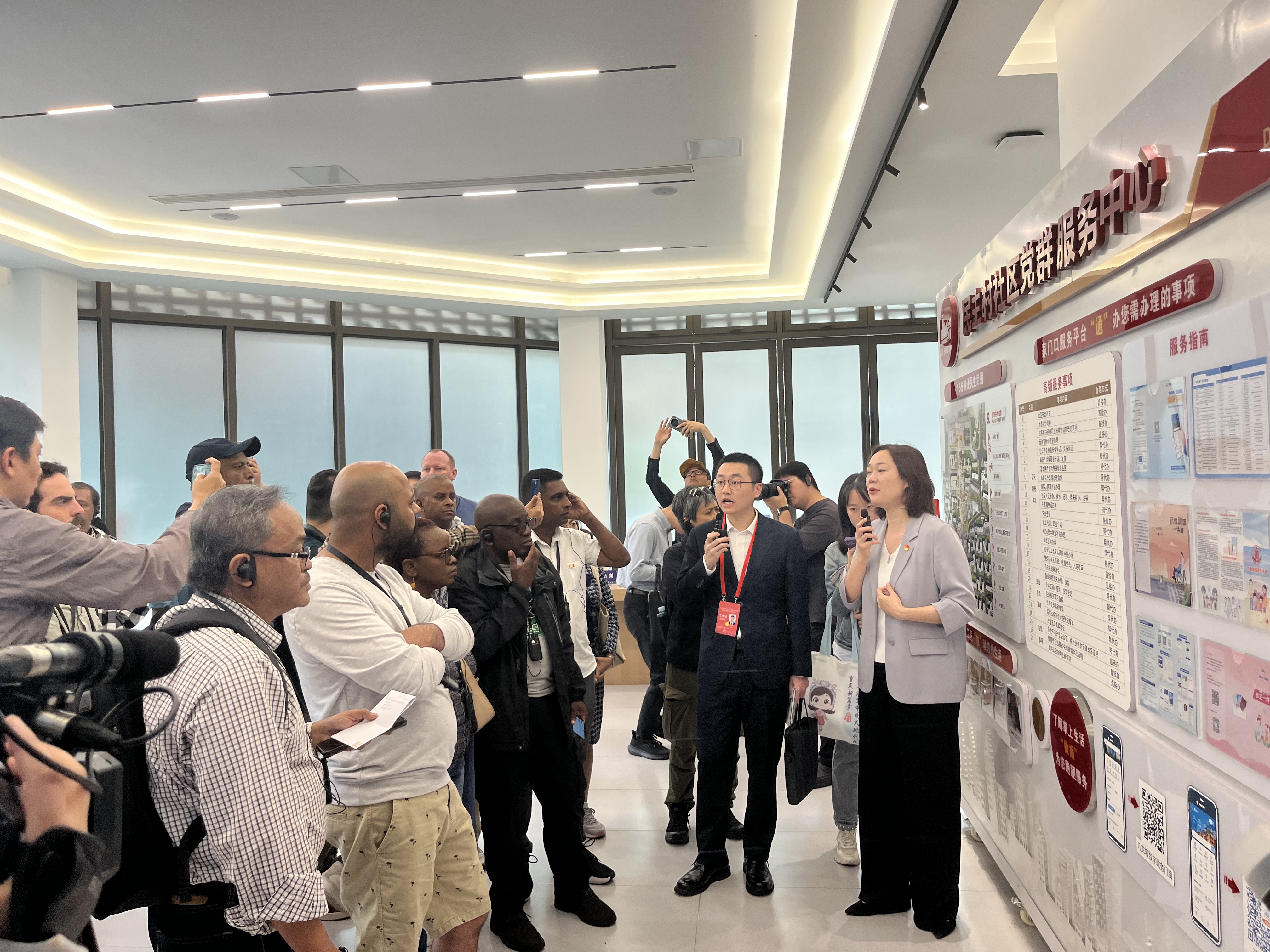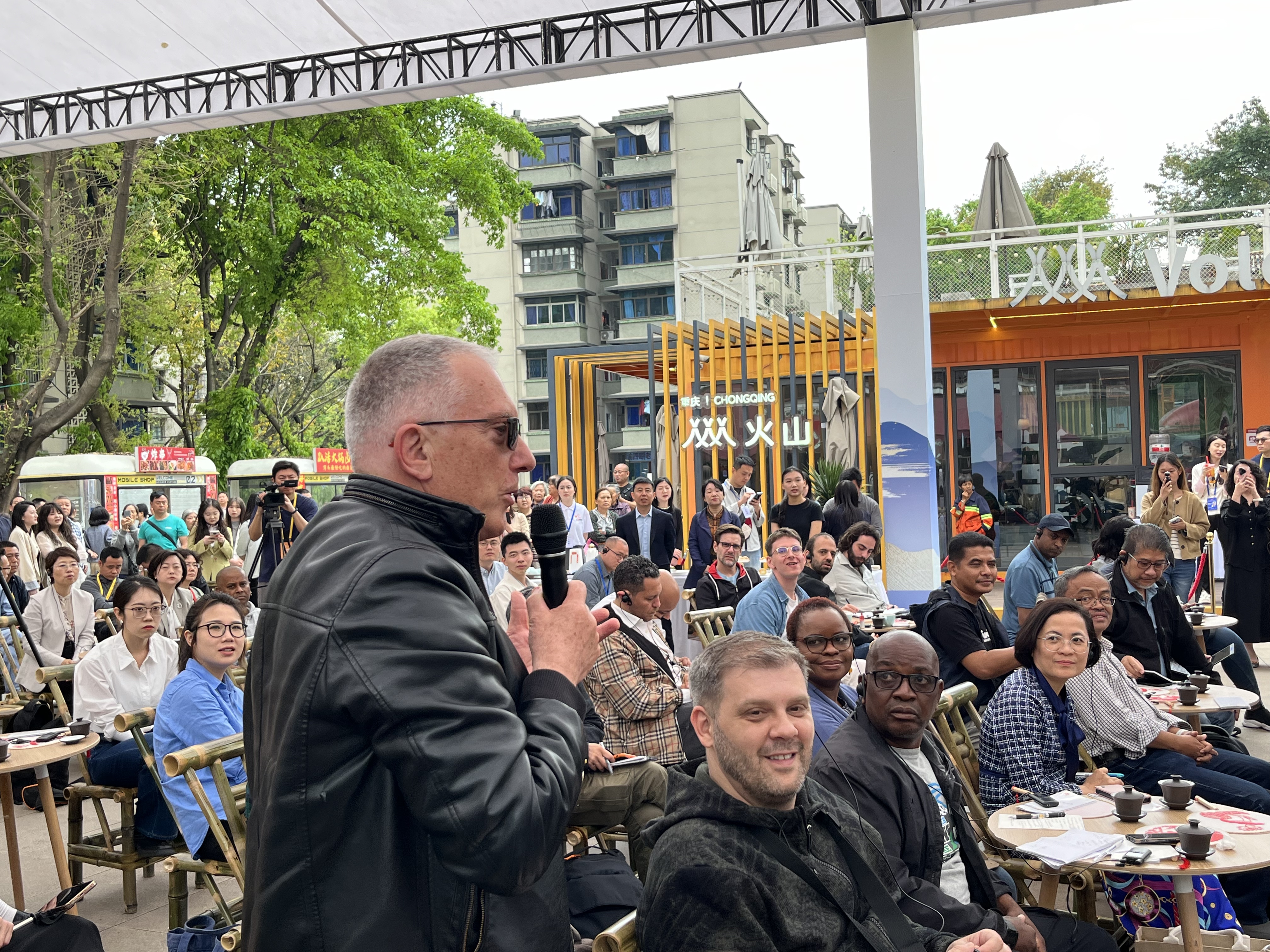 Bridging News
Bridging News
A Global Glimpse into Chongqing’s Minzhucun Community: Urban Renewal with a Human Touch
Chongqing – From a single wooden table, a folding chair, and a warm cup of tea, a powerful conversation unfolds. In Minzhucun community, nestled in Chongqing’s Jiulongpo District, these humble symbols are where local residents, Party officials, and now foreign media gather to discuss life, change, and the future face-to-face.
On April 22, foreign journalists and political representatives from around the world visited the Minzhucun community as part of the event “The Story of the Communist Party of China—Achievements of Chongqing in Practicing Xi Jinping Thought on Socialism with Chinese Characteristics for a New Era.” What they discovered was not just a revitalized community, but a model of inclusive governance, historical preservation, and social warmth — a living example of how China is building modernization with human values at its core. The Minzhucun community has become a “window” through which the world can gain a better understanding of how modern China balances innovation with tradition.

A delegation of foreign party media representatives visited Minzhucun Community in Xiejiawan Subdistrict, Jiulongpo District—a model site for modern megacity governance in Chongqing. (Photo/ Natalia Vakhrusheva)
“Here, things aren’t done to the people — they're done with them,” said Guy Mettan, Former CEO of Swiss Press Club and Former Deputy at Geneva Parliament. Speaking to the media, Mettan praised the community for its “bottom-up renovation model” and its efforts to prevent real estate speculation.
“In Europe, we often demolish everything and rebuild, selling properties at five or ten times the original cost. But here, they preserved the buildings and stabilized rents through open political discussions. That’s very impressive,” he said.
One of the most unique mechanisms in Minzhucun’s governance is the “Four-Party Consultation Council”. This grassroots platform brings together residents, businesses, property managers, and local officials to solve issues collaboratively — from elevator installations to garbage disposal and road repairs.
Following the visit, the delegation joined a media exchange session titled “Longmenzhen in Minzhucun”, centered on the theme of Party-led grassroots governance. Together with local officials, they explored topics such as smart governance under Party leadership, digital empowerment in modern urban governance, and livelihood initiatives under Party leadership in Jiulongpo District and Erlang Subdistrict.
 Delegation of foreign party media representatives joined a media exchange session titled “Longmenzhen in Minzhucun” (Photo/ Natalia Vakhrusheva)
Delegation of foreign party media representatives joined a media exchange session titled “Longmenzhen in Minzhucun” (Photo/ Natalia Vakhrusheva)
A question from foreign media hit at the heart of global urban development: How do you preserve city memory amid modernization?
The answer in the Minzhucun community lies in deliberate preservation, as seen in the red-brick guesthouse that once served as factory housing and now serves as a cultural meeting point. Rather than erasing history, the community has worked to weave it into their renewed daily lives through architecture, food, and community rituals.
Minzhucun community defies the typical narrative of urban redevelopment. It’s not a flashy overhaul designed for outsiders—it’s a carefully cultivated ecosystem designed for the people who already live there. It preserves their stories, includes them in decisions, and gives them a stake in the future.
 Related Stories
Related Stories